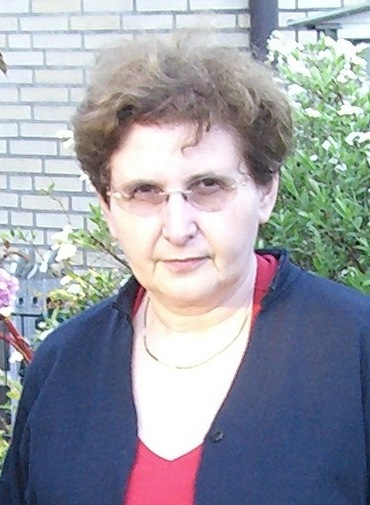Tutorial 1. Systems Theoretical Approach to Situation Awareness: Historical and Modern PerspectivesInstructor: Dr. Peter Erdi, Henry R. Luce Professor of Complex Systems Studies at Kalamazoo College, Kalamazoo, MI, USA Time: Monday 27 March 2017: 0800-1200
Abstract: Perception, comprehension, and projection are the three basic components of situation awareness and management. This tutorial gives a bird’s eye description how early and modern interdisciplinary approaches contributed to the establishment of the theoretical frameworks of perceiving, predicting, controlling complex events. Cybernetics, AI, Cognitive Science and related disciplines are the somewhat tacit precursors of Situation Management and Decision Support. Topics:
Dr. Péter Érdi serves as the Henry R. Luce Professor of Complex Systems Studies at Kalamazoo College. He is also a research professor in his home town, in Budapest, at the Wigner Research Centre of Physics of the Hungarian Academy of Sciences. In addition, he is the founding codirector of the Budapest Semester in Cognitive Science, a study abroad program. Péter is a Member of the Board of Governors of the International Neural Network Society, the Vice President of Membership of the International Neural Network Society, member of the IEEE Computational Intelligence Society Curriculum Subcommittee, and serves among others as the Editor-in-Chief of Cognitive Systems Research. His books on mathematical modeling of chemical, biological, and other complex systems have been published by Princeton University Press, MIT Press, Springer Publishing House.
|
Tutorial 2. Higher Level Information Fusion for Intelligence Analysis, Decision-making, and Situation Management: Challenges and Computational ApproachesInstructors: Dr. James Llinas, State University of New York at Buffalo & Dr. Galina Rogova, State University at Buffalo Time: Monday 27 March 2017: 0800-1200
Abstract. Automated Data and Information Fusion (DIF) is fundamentally an estimation process that exploits all available data and information to develop an optimal estimate based largely on minimizing the attendant uncertainty in that estimate. The current reference model for this process partitions the process into “Levels” associated with the complexity of the construct of the estimate. The so-called lower Levels are designed to estimate the properties of interest of (ideally) the single entities of concern in any problem domain. The higher Level estimates are defined as situational estimates and impact estimates, formed in part by various aggregation operations on the low-level results as well as from other reasoning processes. In the far larger number of cases of application, the system design approach for a DIF system is directed to the fundamental operations on the basic evidence, such as from sensor systems, and bounded with the concluding steps of forming the estimate of interest. We motivate our discussion in part with the notional Use Case domain regarding Critical/Crisis Situations that can be caused by natural and/or man-made activities and usually result in dangerous social, political, economic, and large-scale environmental events as well as military operations. In these environments, it is important to monitor, recognize, and make sense of these activities as early as possible in order to either prevent a crisis or mitigate its outcome. Recognizing crises and effectively responding to them requires systematically gathering, analyzing, and fusing a large amount of data and information. There are two interrelated challenges here:
The former is the problem of Higher Level Fusion (situation and impact assessment), involving processes that infer, approximate, and predict the critical characteristics of the environment to produce contextual understanding of the events and behaviors of interest. One major challenge here is the issue of synthesis of various hypotheses that together form a situational picture or narrative or story; these are the aspects of analysis. The latter is the problem of crisis management, a collection of methods and tools aimed at helping decision makers to control dynamic situations and act effectively to prevent and/or mitigate crises. Higher Level Fusion represents a key enabling technology for crisis management since it provides decision makers with a better understanding of current situation and situation dynamics. Our approach to realizing a holistic Higher Level Fusion process design attempts to account for these factors and the associated functional interdependencies. In this tutorial, we develop and argue for a much more expansive approach to systems engineering for DIF systems, discussing the need for overt consideration of those subsequent processes that the DIF estimates typically support, such as intelligence analysis, decision-making, and situational management. We discuss:
Specific scenarios in the domains of homeland security and natural disasters will be also considered to show how the processes and methods presented in the tutorial can be used for the solution of real world problems.
Dr. James Llinas brings over 30 years of experience in multisource information processing and data fusion technology to his research, teaching, and business development activities. He is an internationally-recognized expert in sensor, data, and information fusion, co-authored the first integrated book on Multi-sensor Data Fusion, and has lectured internationally for over 20 years on this topic. He has also co-edited and co-authored the Handbook of Data Fusion, the text on Distributed Fusion for Net-centric Operations, and most recently the book on Context Enhanced Information Fusion. He was a Technical Advisor to the Defense Department’s Joint Directors of Laboratories (JDL) Data Fusion Group, a position he held for 15 years. His experience in applying this technology to different problem areas ranges from defense applications to non-defense applications to include intelligent transportation systems, medical diagnostics, and condition-based maintenance, among others. He has acted as an advisor to many government and industrial organizations to include the Air Force Laboratory’s Information Directorate and Sensors Directorate, the National Security Agency, the Australian Defense Science and Technology Organization, and numerous other agencies. He was awarded the DoD Joe Mignona National Data Fusion Award for his lifetime contributions to data fusion.
Dr. Galina Rogova is a research professor at the State University at Buffalo. She is recognized internationally as an expert in information fusion, machine learning, decision making under uncertainty, and information quality. She has worked on a wide range of defense and non-defense problems such as situation and threat assessment, understanding of volcanic eruption patterns, computer-aided diagnosis, and intelligent transportation systems among others. Her research was funded by multiple government agencies as well as commercial companies. She published numerous papers and co-edited 6 books. She served as a program committee member, special session organizer, and tutorial lecturer for numerous International Conferences on Information Fusion. Dr. Rogova was also a member of the organizing committee of multiple NATO Advance Study Institutes and NATO Advanced Research Workshops on information fusion and decision support.
|
Tutorial 3. Building Closed-Loop Human Performance Improvement Systems: Keeping Autonomy in MindInstructors: Dr. Bart Russell & Dr. Bill Casebeer, Human Systems and Autonomy research area within Lockheed Martin’s Advanced Technology Laboratories Time: Monday 27 March 2017, 1300-1700
Abstract: Realizing the benefits of Undersecretary of Defense Bob Work’s “third offset strategy” requires designing, developing and deploying systems that enable humans and their machine teammates to work together more effectively as a team. At Lockheed Martin Advanced Technology Laboratories, our Human Systems and Autonomy Research Area has focused on leveraging a “sense,” “assess,” and “augment” paradigm to think about human-machine teaming. In this workshop, we will describe several projects we have accomplished or are accomplishing which assist with performance improvement, and focus in particular on the use of electro-encephalograms as a signal which can be used to improve execution of shared human-machine team tasks. Dr. Bart Russell is a Senior Research Scientist in the Human Systems and Autonomy research area within Lockheed Martin’s Advanced Technology Laboratories. There she uses her expertise in human neurophysiology to help design systems that monitor, assess, and adapt to the human operator to optimize overall human-system performance, and interfaces that maximize the efficiency of information exchange and collaborative behavior in human-machine partnerships. To understand how human systems change and react to extreme military situations, Bart’s research includes understanding the ways stress affects human attention, emotional regulation, perception and information processing. As part of that work she has adapted methods quantifying volitional attention control for applied research and possible integration into operational systems. Some of the work she has most enjoyed includes field research studying elite military units in training and selection courses to understand how cognition, memory and decision-making breaks down under intense, prolonged stress. She is particularly interested in why some people, including members of Special Operations Forces and other elite military units, perform well despite extreme and high-threat conditions, while most fail. Prior to and while completing her Ph.D., Bart spent more than a decade conducting strategic assessments and analysis of the operational relevance, opportunities, and threats associated with emerging biotechnological developments in human performance for the Department of Defense (SAIC 2003-2006, Scitor Corporation, 2006-2014). She was a fellow with the Center for Advanced Study of Language (CASL) between 2008-2012 where she studied the effects of burnout on verbal and visuospatial working memory and executive function. She has a Bachelor of Arts from Northwestern University, a Master of Arts in Security Studies from Georgetown University, and a PhD in Neuroscience and Cognitive science from the University of Maryland, College Park.
Dr. Bill Casebeer is a Research Area Manager in Human Systems and Autonomy for Lockheed Martin’s Advanced Technology Laboratories, where he leads science and technology development programs to improve human performance and the ability of people and autonomous technology to work together on teams. Bill served as a Program Manager at the Defense Advanced Research Projects Agency from 2010-14 in the Defense Sciences Office and in the Biological Technologies Office, where he established DARPA’s neuroethics program. He retired from active duty as a US Air Force Lieutenant Colonel and intelligence analyst in August 2011, where he earned multiple Distinguished Meritorious Service medals. Formerly an Associate Professor of Philosophy at the Air Force Academy, Casebeer was a fellow at the Carr Center for Human Rights Policy at Harvard’s Kennedy School of Government 2005-2006. He was a term member of the Council on Foreign Relations and is an experienced Middle East analyst with multiple deployments to the region. Bill is author of Natural Ethical Facts: Evolution, Connectionism, and Moral Cognition (MIT Press), co-author of Warlords Rising: Confronting Violent Non-State Actors (Lexington Books), and has published on topics from the morality of torture interrogation to the rhetoric of evil in international relations in venues such as Nature Reviews Neuroscience, Biology and Philosophy, and International Studies. His research interests include the intersections of cognitive science and national security policy, neuroethics, autonomous technology, political violence, philosophy of mind, and human performance. He holds a Bachelor of Science in political science from the US Air Force Academy, a Master of Arts in national security studies from the Naval Postgraduate School, a Master of Arts in philosophy from the University of Arizona and a joint PhD in cognitive science and philosophy from the University of California at San Diego. |
Tutorial 4. “Are you Sure?” Uncertainty in Textual Information in Situation UnderstandingInstructor: Dr. Kellyn Rein, Fraunhofer FKIE, Germany Time: Monday 27 March 2017, 1300-1700 Abstract. Computer-based situation understanding relies on algorithms for text analytics to identify and extract various kinds of pertinent, new actionable information from natural language sources such as reports, blogs, social media and other forms of communication. However, extraction of text elements from their contexts basically overlooks one important facet of human communication: not all that is written is fact. Much is speculation, hearsay, assumption, or even discussion of events which have not happened yet (and which may not happen). Ignoring this comes with a cost — treating all extracted information as fact is dangerous. However, buried in sentences are lexical and grammatical structures that indicate the uncertainty of the propositions. Such elements include hedges such as modal adverbs and adjectives, as well as hearsay markers, indicators of inference or belief (”mindsay”), and verb forms which indicate possible future actions. In this tutorial, we look at how analysis of these lexical and grammatical forms of uncertainty can provide a way to determine an evidential weight for the proposition, enabling us to automatically make an assessment about the credibility of information extracted from English text.
Dr. Kellyn Rein received her PhD from the University of Bonn, after a BA at Michigan State University /USA, and two masters, one in Management and one in Computer Information Systems, both with joint conferral from Boston University (1984) and Vrije Universiteit Brussel in Belgium. She is currently a Research Associate at the Research Institute for Communication, Information Processing and Ergonomics (FKIE) at Fraunhofer Gesellschaft, Europe’s largest research organization. Her area of research interest is in the analysis of uncertainty in natural language information. She is also involved in numerous NATO Research Task Groups including chairing one on multi-level, multi-source information fusion. |








